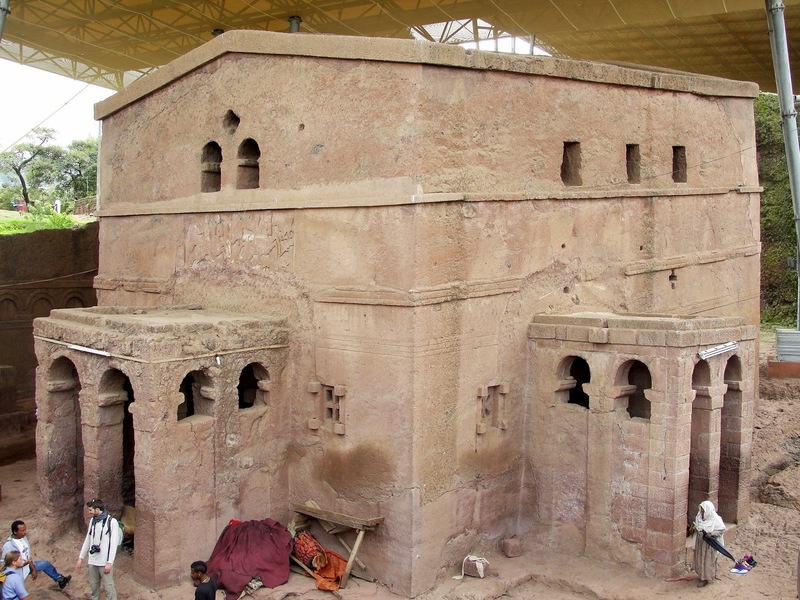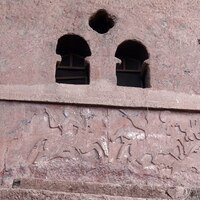Lalibela complex
Type:
Churches,
Religious complexes
Date:
Late twelfth or thirteenth century (dates uncertain)
Location or Findspot (Modern-Day Country):
Ethiopia
Description:
The Christian complex near Lalibela in Ethiopia is famous for its rock-cut churches as is named after its patron, King Lalibela (r. ca. 1200–1225). The churches were not built but rather created through a subtractive method of removing earth and rock from the natural terrain. The resulting churches, built from the top down, are monolithic. Their exterior decoration recalls the designs on stelae (funerary markers) in Aksum, likings King Lalibela to that earlier era of Ethiopian history. The eleven extant churches include Beta Maryam (House [i.e., Church] of Mary) and Beta Giyorgis (House of St. George).
Relevant Textbook Chapter(s):
8,
9,
Introduction
Repository and Online Resources:
• Visit the Zamani Project's website for 3D models, videos, photos, and maps of Lalibela.
• The churches are part of the UNESCO World Heritage Site at Lalibela.
• See a 60 Minutes segment on Lalibela.
Image Credits:
Wikimedia Commons, TravelMuse/Alamy, Navid Jamali








